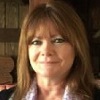REFERENCES:
Arditti, J. A. (1999). Rethinking relationships between divorced mothers and their children: Capitalizing on family strengths. Family Relations, 48, 109-119.
Asperger syndrome: MedlinePlus Medical Encyclopedia. (2006). National Library of Medicine – National Institutes of Health. Retrieved May 05, 2011, from http://www.nlm.nih.gov/medlineplus/e...cle/001549.htm
Berk, L. (2007). Development through the life span (4th ed.). Boston: Allyn and Bacon.
Boulton, M. J. (1999). Concurrent and longitudinal relations between children’s playground behavior and social preference, victimization, and bullying. Child Development, 70, 944-954.
Chao, R. (2001). Extending research on the consequences of parenting styles for Chinese Americans and European Americans. Child Development, 72, 1832-1843.
Cillesen, A. H., & Mayeaux, L. (2004). From censure to reinforcement: Developmental changes in the association between aggression and social status.. Child Development, 75, 147-163.
Considered, A. T. (n.d.). Youth Soccer Coaches Encouraged to Ease Regimen : NPR. NPR : National Public Radio : News & Analysis, World, US, Music & Arts : NPR. Retrieved May 05, 2011, from http://www.npr.org/templates/story/s...toryId=5428473
Davis, N. J. (1999). Youth crisis: Growing up in the high-risk society. Westport, CT: Praeger.
Drexler, P. (2005). Raising boys without men. Emmaus, PA: Rodale.
Finkelhor, D. (1984). Child sexual abuse: New theory and research. New York: Free Press.
Finkelhor, D., Hotaling, G., Lewis, I. A., & Smith, C. (1990). Sexual abuse in a national survey of adult men and women: Prevalence, characteristics, and risk factors. Child Abuse and Neglect, 14, 19-28.
Furstenberg, F. F., & Cherlin, A. J. (1991). Divided families: What happens to children when parents part. Cambridge, MA: Harvard University Press.
Gardner, H. (1983). Frames of mind: The theory of multiple intelligences. New York: Basic Books.
Gardner, H. (1998). Are there additional intelligences? The case for naturalist, spiritual, and existentialist intelligences. In J. Kane (Ed.), Education, information, and transformation: Essays on learning and thinking. Englewood Cliffs, NJ: Prentice-Hall.
Gardner, H. (1999). Intelligence reframed: Multiple intelligences for the 21st century. New York, NY: Basic Books.
Guttmann, J. (1993). Divorce in psychosocial perspective: Theory and research. Hillsdale, NJ: L. Erlbaum Associates.
Harmanci, R. (2006, December 17). Sex inuendo: Under the tree over the punch bowl. Cultural shift: Little girls, sexy dolls-toy industry markets to ‘Kids growing older younger. Retrieved January 3, 2007, from http://www.sfgate.com/cgi-bin/articl...NGoMN18MP1.DTL
Hetherington, E. M., & Kelly, J. (2002). For better or for worse: Divorce reconsidered. New York: W.W. Norton.
Horvat, E. M. (2004). Moments of social inclusion and exclusion: Race, class, and cultural capital in family-school relationships. In A. Lareau (Author) & J. H. Ballantine & J. Z. Spade (Eds.), Schools and society: A sociological approach to education (2nd ed., pp. 276-286). Belmont, CA: Wadsworth.
Irvine, M. (2006). 10 is the new 15 as kids grow up faster. Retrieved January 3, 2007, from http://ww.foxnews.com/wires/2006Nov2...Tweens.00.html
Kohlberg, L. (1963). The development of children’s oreintations toward a moral order: Sequence in the development of moral thought. Vita Humana, 16, 11-36.
McLanahan, S., & Sandefur, G. D. (1994). Growing up with a single parent: What hurts, what helps. Cambridge, MA: Harvard University Press.
McLaren, P. (1999). Schooling as a ritual performance: Toward a political economy of educational symbols and gestures (3rd ed.). Lanham, MD: Rowman & Littlefield.
Papernow, P. L. (1993). Becoming a stepfamily: Patterns of development in remarried families. San Francisco: Jossey-Bass.
Pervasive Developmental Disorders Information Page. (n.d.). National Institute of Neurological Disorders and Stroke (NINDS). Retrieved May 05, 2011, from http://www.ninds.nih.gov/disorders/pdd/pdd.htm
Seccombe, K., & Warner, R. L. (2004). Marriages and families: Relationships in social context. Belmont, CA: Wadsworth/Thomson Learning.
Spade, J. Z. (2004). Learning the student role: Kindergarten as Academic Boot Camp. In H. Gracey (Author) & J. H. Ballantine (Ed.), Schools and society: A sociological approach to education (2nd ed., pp. 144-148). Belmont, CA: Wadsworth.
Special issues for tweens and teens. (n.d.). Retrieved December 23, 2006, from http://www.media-awareness.ca/englis...nderForPrint=1
Squires, R. (2006, November 3). Marketers hijack sexuality: Expert decries young girls’ loss of childhood. Winnipeg Sun. Retrieved January 3, 2007, from http://www.jeankilbourne.com/news.htm.
Sternberg, R. J. (1997). Successful intelligence: How practical and creative intelligence determine success in life. New York: Plume.
Sternberg, R. J. (1999). A triarchic approach to understanding and assessment of intelligence in multicultural populations. Journal of School Psychology, 37, 145-159.
Stewart, A. J., Copeland, Chester, Malley, & Barenbaum. (1997). Separating together: How divorce transforms families. New York: Guilford Press.
Turnbull, J. K. (1985). To dream the impossible dream: An agenda for discussion with stepparents. In S. K. Turnbull (Author) & L. Cargen (Ed.), Marriage and family: Coping with change. Belmont, CA: Wadsworth.
Tyre, P. (2006, September 11). The new first grade: Too much too soon? Newsweek, 34-44.
United States, Center for Disease Control, Department of Health and Human Services. (2006, April 5). Autism. Retrieved from http://www.cdc.gov/ncbddd/autism/index.htm
United States, Center for Disease Control, Metropolitan Atlanta Developmental Disabilities Surveillance Program. (2005, January 21). Retrieved December 30, 2006, from http://www.cdc.gov/ncbddd/autism/ask_common.htm
United States, U. S. Department of Health and Human Services, U. S. Government Printing Office. (2005). Health United States (2005g). Washington, D. C.
Valentine, S. M. (2005). Sexual abuse of boys. Journal of Child and Adolescent Psychiatric Nursing, 18(1), 10-16.
Visher, E. B., & Visher, J. S. (1985). Stepfamilies are different. Journal of Family Therapy, 7(1), 9-18.
Woitalla, M. (2006, January 30). Remember, it’s playtime. Retrieved December 23, 2006, from http://www.socceramerica.com/article...t_ID=562136883


